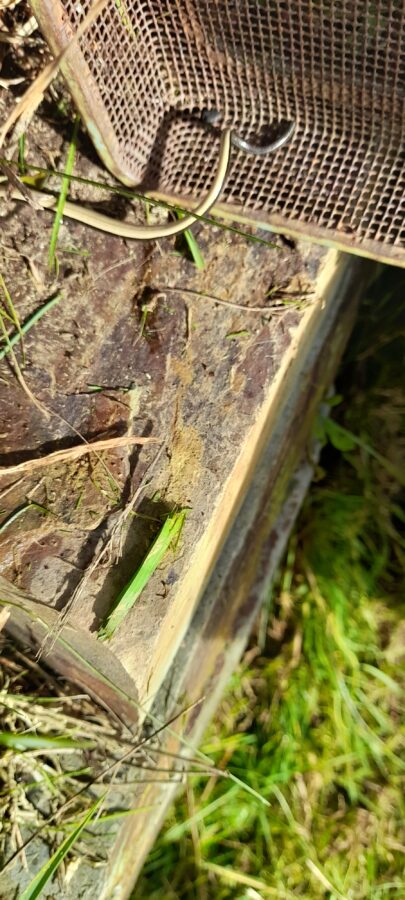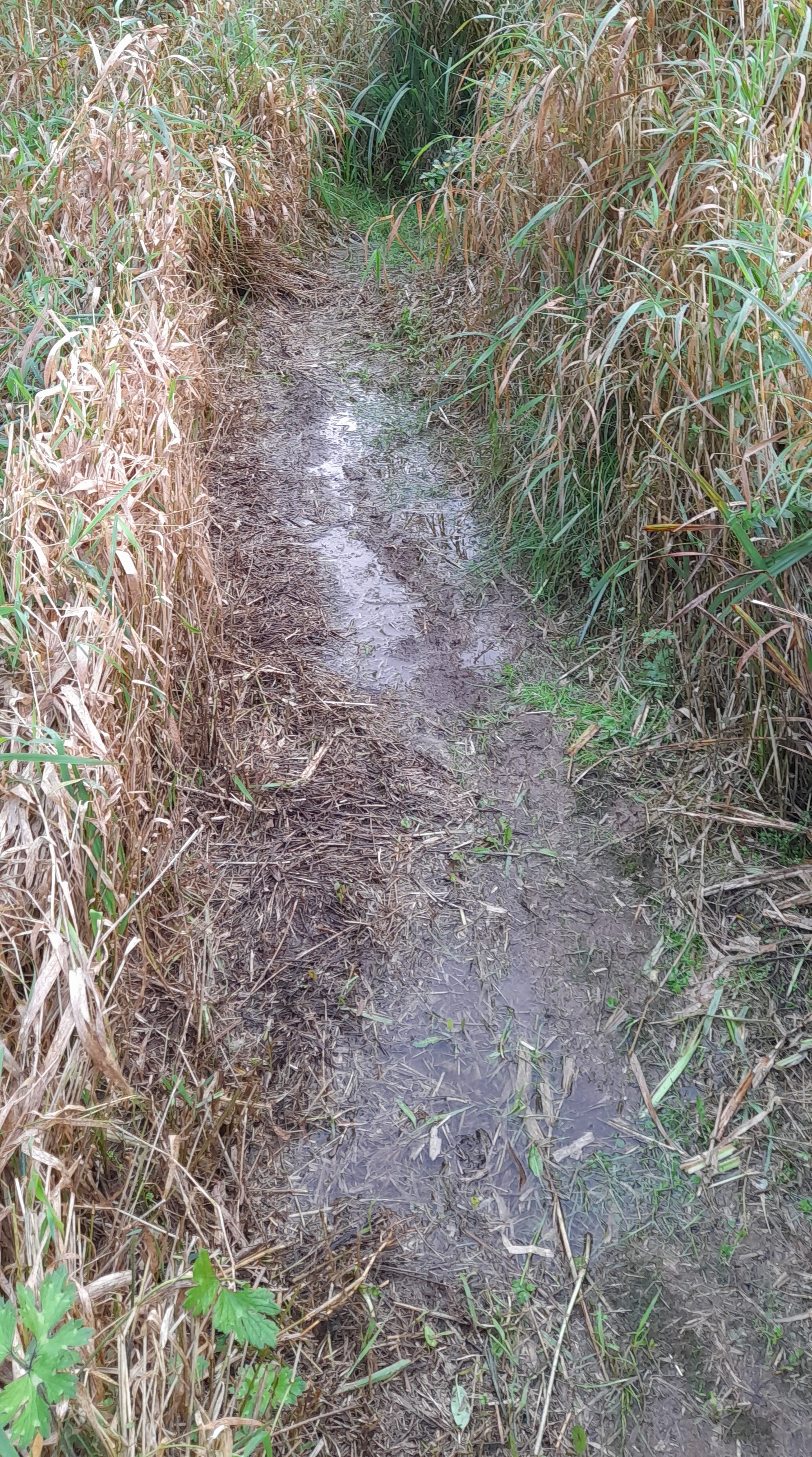We were out tidying the garden after the storms and rain of last week. I was trimming the grass on the steps, which is a bit of a trip hazard. The steps lead down to the watermeadow and are on the left of the ramp, which has a bit of dry-stone wall to stop it collapsing. Suddenly, I noticed a tiny silvery snake on the dry-stone wall next to me. Except that it wasn’t a snake, it was a baby slow worm. I was over the moon! I saw an adult slow worm, patterned in a glossy brown tweed, writhing across the lawn a couple of months ago, but because it was the top garden, I didn’t count it even though we have seen slow worms on the ramp in the past.

Also, this one was a baby, with striking two-tone colouring – silver upper and black lower – sleek as a bullet train. I called to Mr C, who came running down with a bird feeder tray, which we carefully put him in for a photoshoot – I was determined not to let the baby get away without a photo.
Slow worms, of course are neither slow nor worms. They are legless lizards, and like lizards can shed their tails if scared, so we had to be really gentle, as this one was so tiny I don’t think there’d be much left of him if he lost his tail.
The name ‘Slow Worm’ is thought to come from the Old English ‘slawyrm’ which means striking worm – wrong on both counts. They are also known as blind worms, also false, but like most other lizards, they are able to blink. Snakes can’t do this as they don’t have eyelids. This obviously led to a lot of confusion in olden times about what the slow worm actually was.
Here’s a picture of Little Venice this week, looking a bit damp. It will be a lot damper than this over the winter!

